Assessment of the Optimal Energy Generation and Storage Systems to Feed a Districting Heating Network
Abstract
:1. Introduction
2. Materials
2.1. District Heating Network and Energy System Configurations
- Pmax,required in winter is the maximum power required by the building block considered during the winter season;
- Pmax,required in summer is the maximum power required by the building block considered during the summer season;
- Cp is the specific heat of water;
- ΔTwinter is the temperature difference between the inlet temperature of the mains water and the outlet temperature during the winter season (this value was set to 10 °C and derives from the specifications of the exchanger);
- ΔTsummer is the temperature difference between the inlet temperature of the mains water and the outlet temperature during the summer season (this value was set equal to 5 °C based on the absorber).
- Boiler configuration.
- Combined Heat and Power (CHP) system (fueled by methane gas).
- Centralized solar system.
- Solar system and CHP configuration.
2.2. Characteristic of User Profiles and Building’s Geometry
2.3. Model Setup
2.3.1. Modelling the Building
- user substation, with the exchanger and the absorber;
- hot storage and cold storage;
- electric charge;
- DHW block;
- the two load profiles, summer, and winter;
- “T out, winter” and “T out, summer” which describe the behavior of the distribution system by delivering the outlet temperature from the terminals.
- −
- Qload is the load of the users connected to the network;
- −
- Qaux is the thermal load supplied to the tank by the heat exchanger;
- −
- Kstorage is the thermal transmittance of the thermal storage;
- −
- FFstorage is the storage form factor;
- −
- Tt is the temperature of the storage;
- −
- Tamb is the ambient temperature;
- −
- ρ is the density of the water;
- −
- Vstorage is the volume of the storage.
2.3.2. Modelling the Networks and the Energy Generation Systems
- −
- Tt, is the temperature of the soil [°C];
- −
- T0,t, is the node’s temperature [°C];
- −
- G, pipe’s flow rate [kg/s];
- −
- r, medium radius of the pipe [m];
- −
- γ, specific heat [J/kgK];
- −
- H, pipe’s transmittance [W/m2K];
- −
- x, pipe’s length [m].
- −
- Qload is the load of the users connected to the network;
- −
- Qaux is the thermal load supplied to the tank by the heat exchanger;
- −
- Kstorage is the thermal transmittance of the thermal storage;
- −
- FFstorage is the storage form factor;
- −
- Tt is the temperature of the storage;
- −
- Tamb is the ambient temperature;
- −
- ρ is the density of the water;
- −
- Vstorage RE represents the volume of water present in the entire district heating network for both the flow and return;
- −
- Vstorage CE is the storage volume.
- −
- Gwater,ICE users, is the water flow rate of the users;
- −
- CpH2O is the heat capacity of the water;
- −
- Tout,exchanger is the temperature of the water leaving the water–fume exchanger, i.e., the temperature at which the cogenerator can bring the water which then returns to the network tank;
- −
- Ttank,network is the temperature of the network tank, i.e., the inlet temperature to the system cogeneration and therefore to the water–water exchanger.
2.4. Exergy Indicator
3. Results
3.1. Boiler Configuration
3.2. Centralizer Solar System Configuration
3.3. CHP Configuration
3.4. Solar System and CHP Configuration
- −
- 120 m3 for the CHP and solar system configuration (Figure 15).
- −
- 90 m3 for the CHP alone.
- −
- 150 m3 for the solar system alone.
- The power of CHP is equal to 2800 kW with 520 panels.
- The power of CHP is equal to 3500 kW with 700 panels.
- The power of CHP is equal to 4200 kW with 840 panels.
4. Conclusions
Author Contributions
Funding
Data Availability Statement
Conflicts of Interest
References
- Giuzio, G.F.; Forzano, C.; Barone, G.; Buonomano, A. Accelerating the Low-Carbon Transition: Technological Advancements and Challenges for the Sustainable Development of Energy, Water, and Environment Systems. Energy Rep. 2024, 11, 4676–4687. [Google Scholar] [CrossRef]
- Barone, G.; Buonomano, A.; Forzano, C.; Giuzio, G.F.; Palombo, A. Assessing Energy Demands of Building Stock in Railway Infrastructures: A Novel Approach Based on Bottom-up Modelling and Dynamic Simulation. Energy Rep. 2022, 8, 7508–7522. [Google Scholar] [CrossRef]
- Halkos, G.E.; Gkampoura, E.C. Reviewing Usage, Potentials, and Limitations of Renewable Energy Sources. Energies 2020, 13, 2906. [Google Scholar] [CrossRef]
- Lu, Y.; Khan, Z.A.; Alvarez-Alvarado, M.S.; Zhang, Y.; Huang, Z.; Imran, M. A Critical Review of Sustainable Energy Policies for the Promotion of Renewable Energy Sources. Sustainability 2020, 12, 5078. [Google Scholar] [CrossRef]
- Terés-Zubiaga, J.; Jansen, S.C.; Luscuere, P.; Sala, J.M. Dynamic Exergy Analysis of Energy Systems for a Social Dwelling and Exergy Based System Improvement. Energy Build 2013, 64, 359–371. [Google Scholar] [CrossRef]
- Dincer, I. The Role of Exergy in Energy Policy Making. Energy Policy 2002, 30, 137–149. [Google Scholar] [CrossRef]
- García Kerdan, I.; Raslan, R.; Ruyssevelt, P.; Morillón Gálvez, D. The Role of an Exergy-Based Building Stock Model for Exploration of Future Decarbonisation Scenarios and Policy Making. Energy Policy 2017, 105, 467–483. [Google Scholar] [CrossRef]
- Nardecchia, F.; Pompei, L.; Egidi, E.; Faneschi, R.; Piras, G. Exergoeconomic and Environmental Evaluation of a Ground Source Heat Pump System for Reducing the Fossil Fuel Dependence: A Case Study in Rome. Energies 2023, 16, 6167. [Google Scholar] [CrossRef]
- Evola, G.; Costanzo, V.; Marletta, L. Exergy Analysis of Energy Systems in Buildings. Buildings 2018, 8, 180. [Google Scholar] [CrossRef]
- Tsatsaronis, G. The Future of Exergy-Based Methods. Energy 2024, 302, 131881. [Google Scholar] [CrossRef]
- Nardecchia, F.; Groppi, D.; Lilliu, I.; Astiaso Garcia, D.; De Santoli, L. Increasing Energy Production of a Ducted Wind Turbine System. Wind Eng. 2020, 44, 560–576. [Google Scholar] [CrossRef]
- Al-Shetwi, A.Q.; Hannan, M.A.; Jern, K.P.; Mansur, M.; Mahlia, T.M.I. Grid-Connected Renewable Energy Sources: Review of the Recent Integration Requirements and Control Methods. J. Clean. Prod. 2020, 253, 119831. [Google Scholar] [CrossRef]
- Lygnerud, K.; Fransson, N.; Särnbratt, M.; Motoasca, E.; Neven, T.; Vanschoenwinkel, J.; Pastor, C.; Gabaldón, A.; Belda, A. District Energy Viewed from the New Bauhaus Initiative Perspective—Sustainable, Inclusive and Aesthetic Heat. Buildings 2023, 13, 2930. [Google Scholar] [CrossRef]
- Li, X.; Li, Y.; Zhou, H.; Fu, Z.; Cheng, X.; Zhang, W. Research on the Carbon Emission Baselines for Different Types of Public Buildings in a Northern Cold Areas City of China. Buildings 2023, 13, 1108. [Google Scholar] [CrossRef]
- Ponechal, R.; Jandačka, J.; Ďurica, P. Evaluation of Residential Buildings Savings for Various Envelope Retrofits and Heating Energy Sources: A Simulation Study. Buildings 2024, 14, 332. [Google Scholar] [CrossRef]
- Hirvonen, J.; Kosonen, R. Waste Incineration Heat and Seasonal Thermal Energy Storage for Promoting Economically Optimal Net-Zero Energy Districts in Finland. Buildings 2020, 10, 205. [Google Scholar] [CrossRef]
- Ali, E.; Ajbar, A.; Lamrani, B. Numerical Investigation of Thermal Energy Storage Systems for Collective Heating of Buildings. Buildings 2024, 14, 141. [Google Scholar] [CrossRef]
- Wahi, P.; Konstantinou, T.; Tenpierik, M.J.; Visscher, H. Lower-Temperature-Ready Renovation: An Approach to Identify the Extent of Renovation Interventions for Lower-Temperature District Heating in Existing Dutch Homes. Buildings 2023, 13, 2524. [Google Scholar] [CrossRef]
- Ju, Y.; Hiltunen, P.; Jokisalo, J.; Kosonen, R.; Syri, S. Benefits through Space Heating and Thermal Storage with Demand Response Control for a District-Heated Office Building. Buildings 2023, 13, 2670. [Google Scholar] [CrossRef]
- Ju, Y.; Jokisalo, J.; Kosonen, R. Peak Shaving of a District Heated Office Building with Short-Term Thermal Energy Storage in Finland. Buildings 2023, 13, 573. [Google Scholar] [CrossRef]
- Pompei, L.; Nardecchia, F.; Mattoni, B.; Gugliermetti, L.; Bisegna, F. Combining the exergy and energy analysis for the assessment of district heating powered by renewable sources. In Proceedings of the 2019 IEEE International Conference on Environment and Electrical Engineering and 2019 IEEE Industrial and Commercial Power Systems Europe (EEEIC/I&CPS Europe), Genova, Italy, 11–14 June 2019; pp. 1–5. [Google Scholar]
- Buonomano, A.; Forzano, C.; Palombo, A.; Russo, G. Solar-Assisted District Heating Networks: Development and Experimental Validation of a Novel Simulation Tool for the Energy Optimization. Energy Convers. Manag. 2023, 288, 117133. [Google Scholar] [CrossRef]
- Yazici, H. Energy and Exergy Based Evaluation of the Renovated Afyon Geothermal District Heating System. Energy Build 2016, 127, 794–804. [Google Scholar] [CrossRef]
- Sartor, K.; Dewallef, P. Exergy Analysis Applied to Performance of Buildings in Europe. Energy Build 2017, 148, 348–354. [Google Scholar] [CrossRef]
- Gao, Y.J.; Wang, S.G.; Jiang, S.; Wu, X.Z.; Wang, J.H.; Zhang, T.F.; Ma, Z.J. Configurations and Exergy Analysis of District Heating Substations Based Mainly on Renewable Energy. In Proceedings of the E3S Web of Conferences, Xi’an, China, 16–19 September 2022; EDP Sciences: Les Ulis, France, 2022; Volume 356. [Google Scholar]
- Causone, F.; Sangalli, A.; Pagliano, L.; Carlucci, S. An Exergy Analysis for Milano Smart City. Energy Procedia 2017, 111, 867–876. [Google Scholar] [CrossRef]
- Kallert, A.; Schmidt, D.; Bläse, T. Exergy-Based Analysis of Renewable Multi-Generation Units for Small Scale Low Temperature District Heating Supply. Energy Procedia 2017, 116, 13–25. [Google Scholar] [CrossRef]
- Calise, F.; Cappiello, F.L.; Cimmino, L.; Vicidomini, M.; Petrakopoulou, F. Thermoeconomic Analysis of a Novel Topology of a 5th Generation District Energy Network for a Commercial User. Appl. Energy 2024, 371, 123718. [Google Scholar] [CrossRef]
- ODESSE Software. Available online: https://pnpe2.enea.it/odesse (accessed on 20 February 2024).

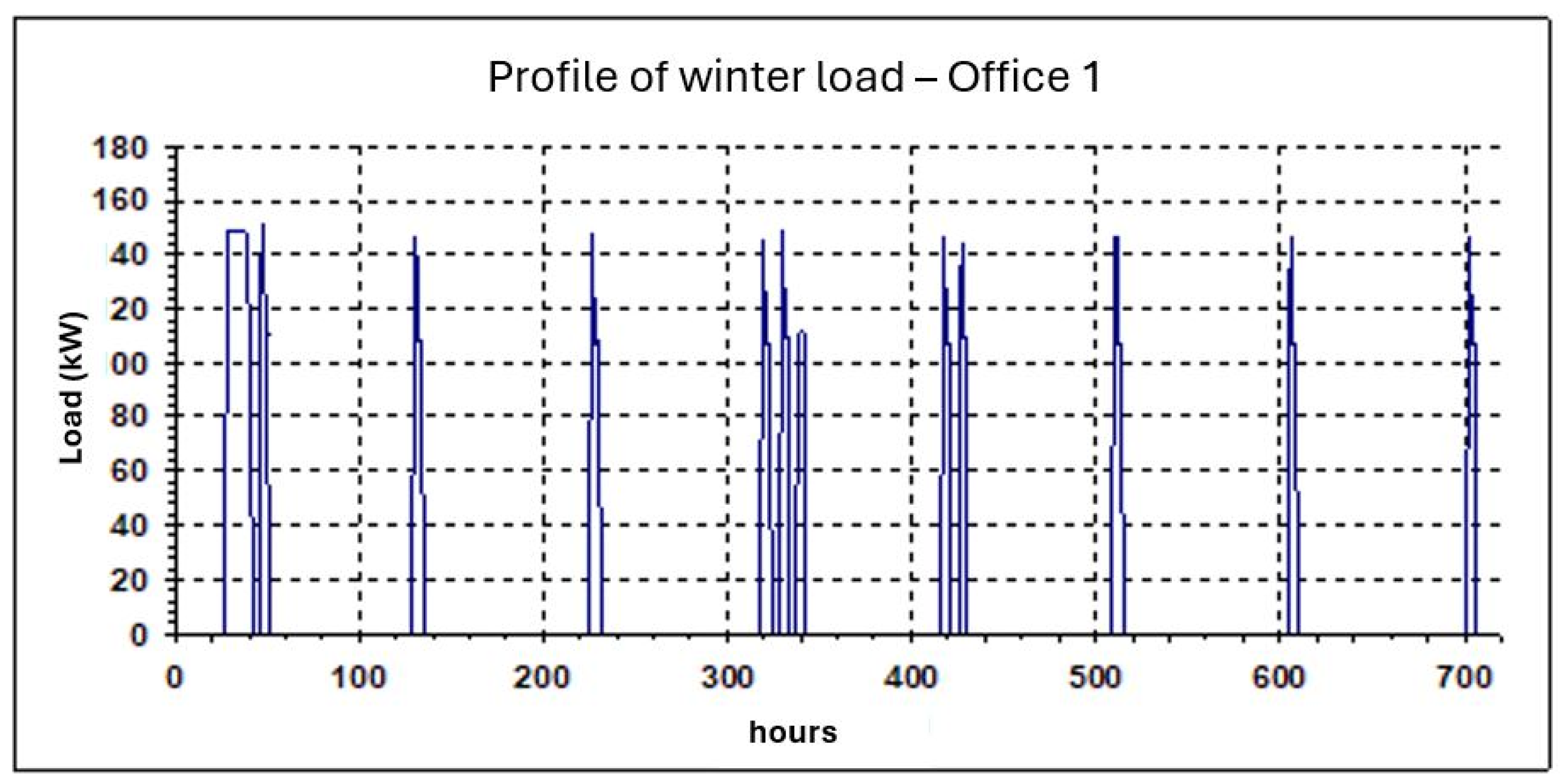
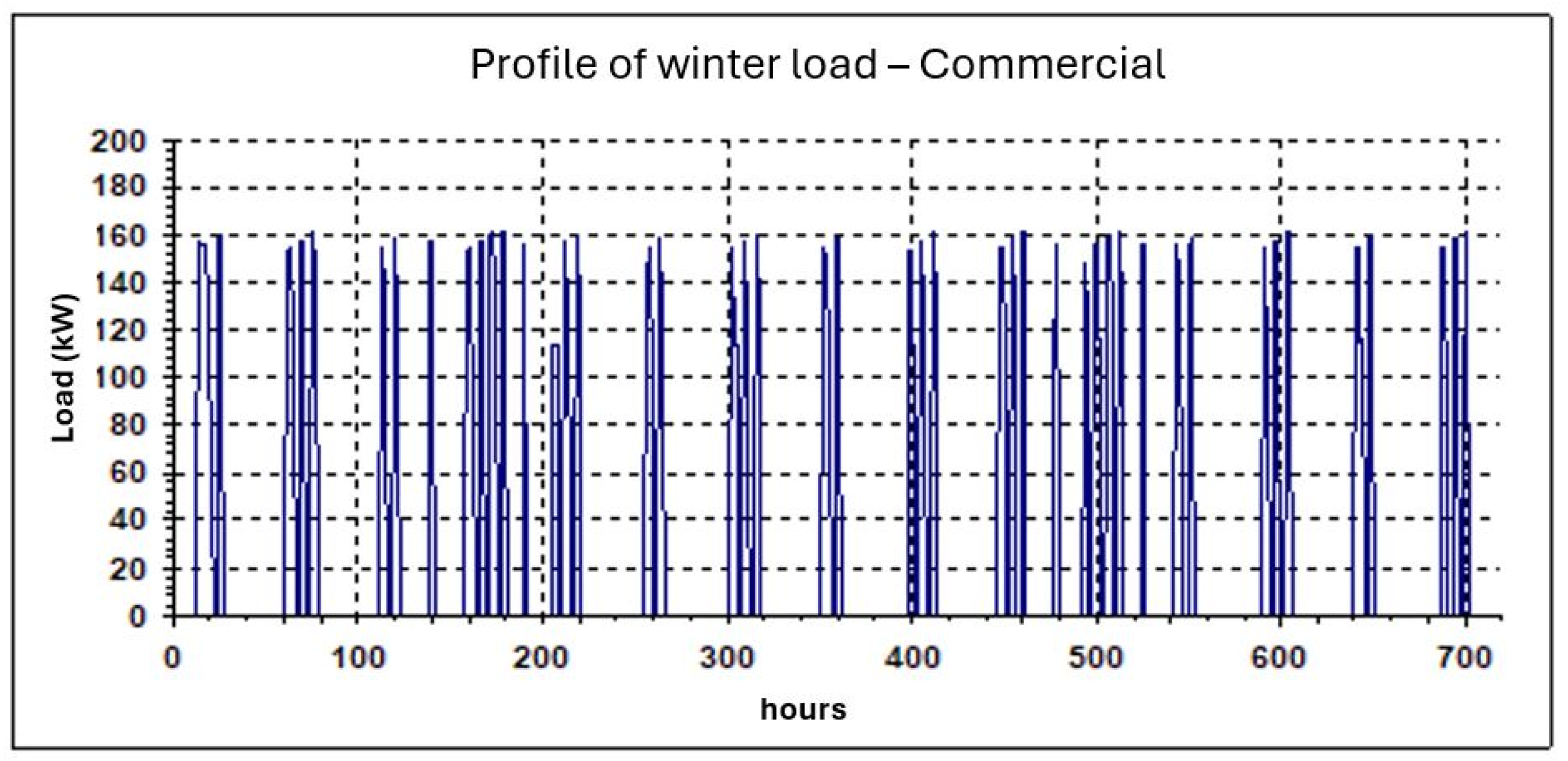
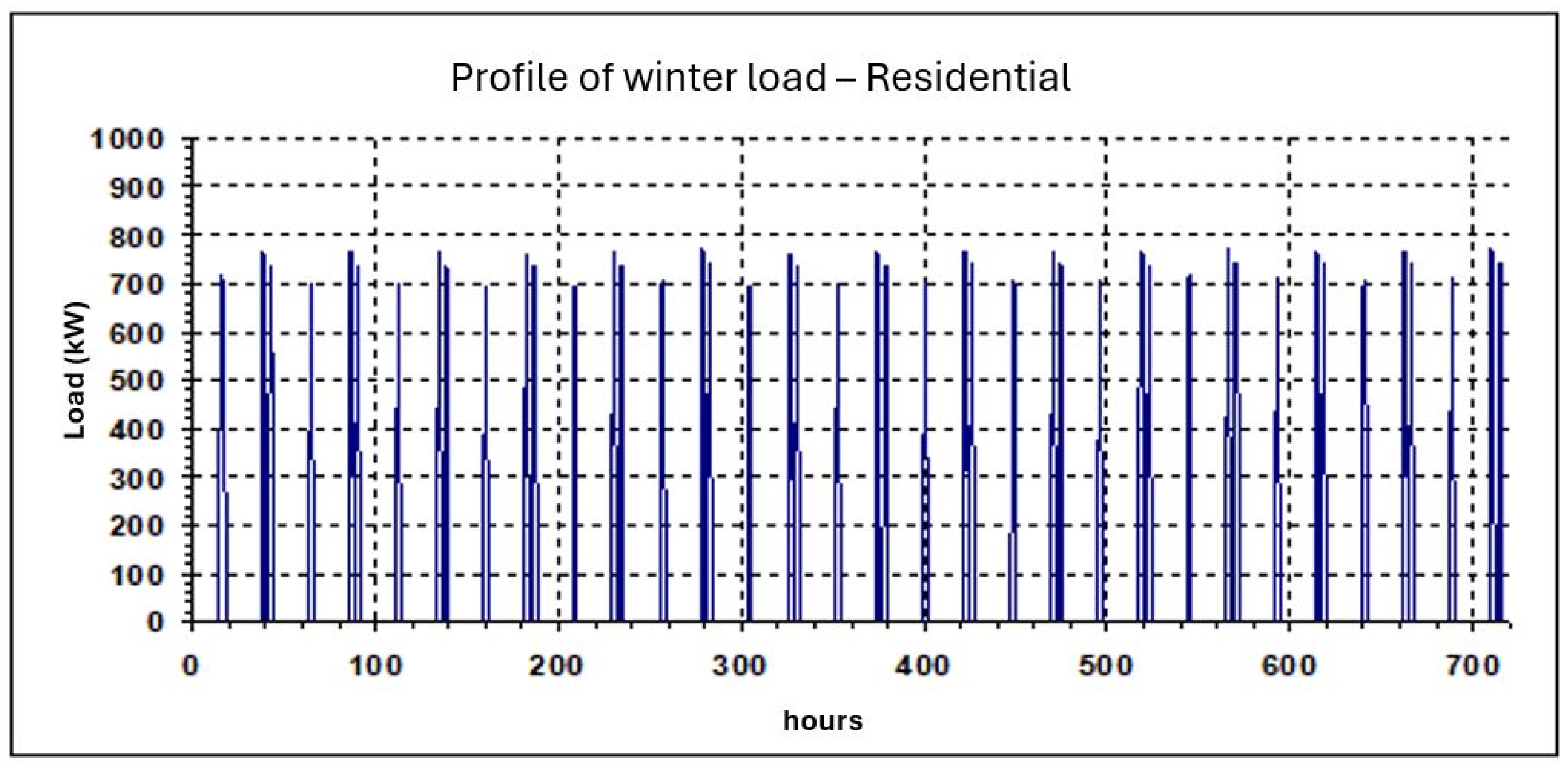
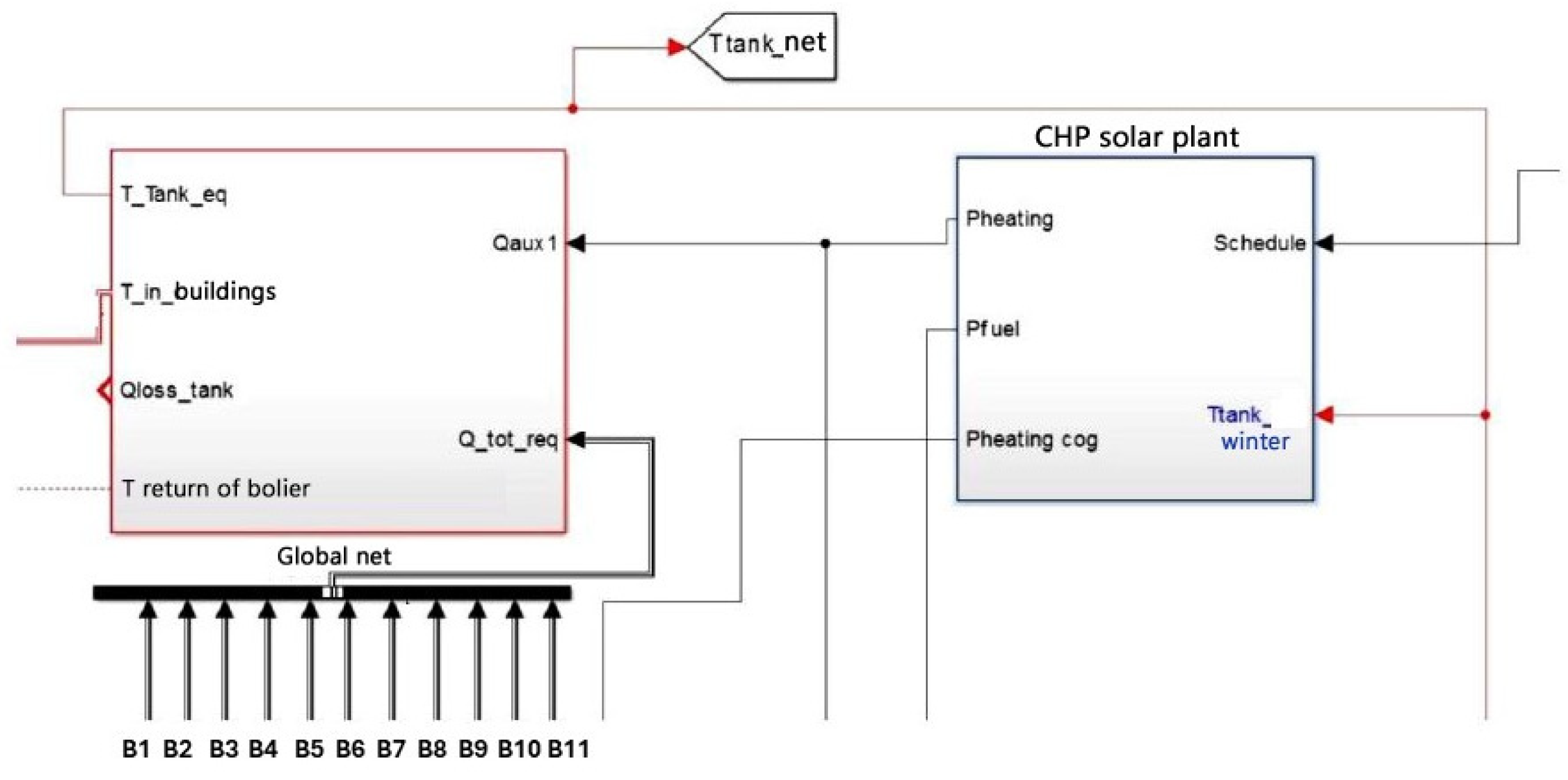
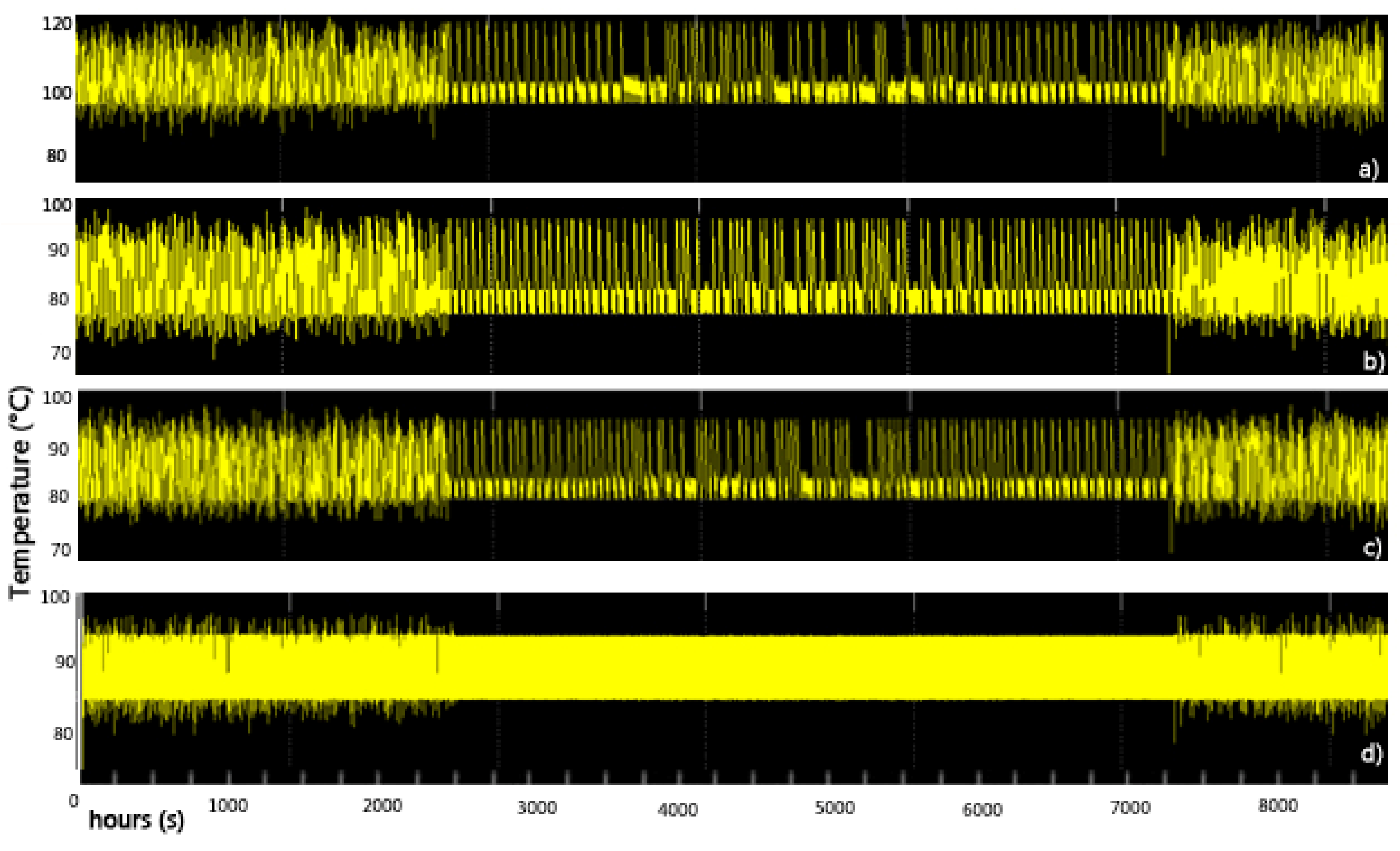
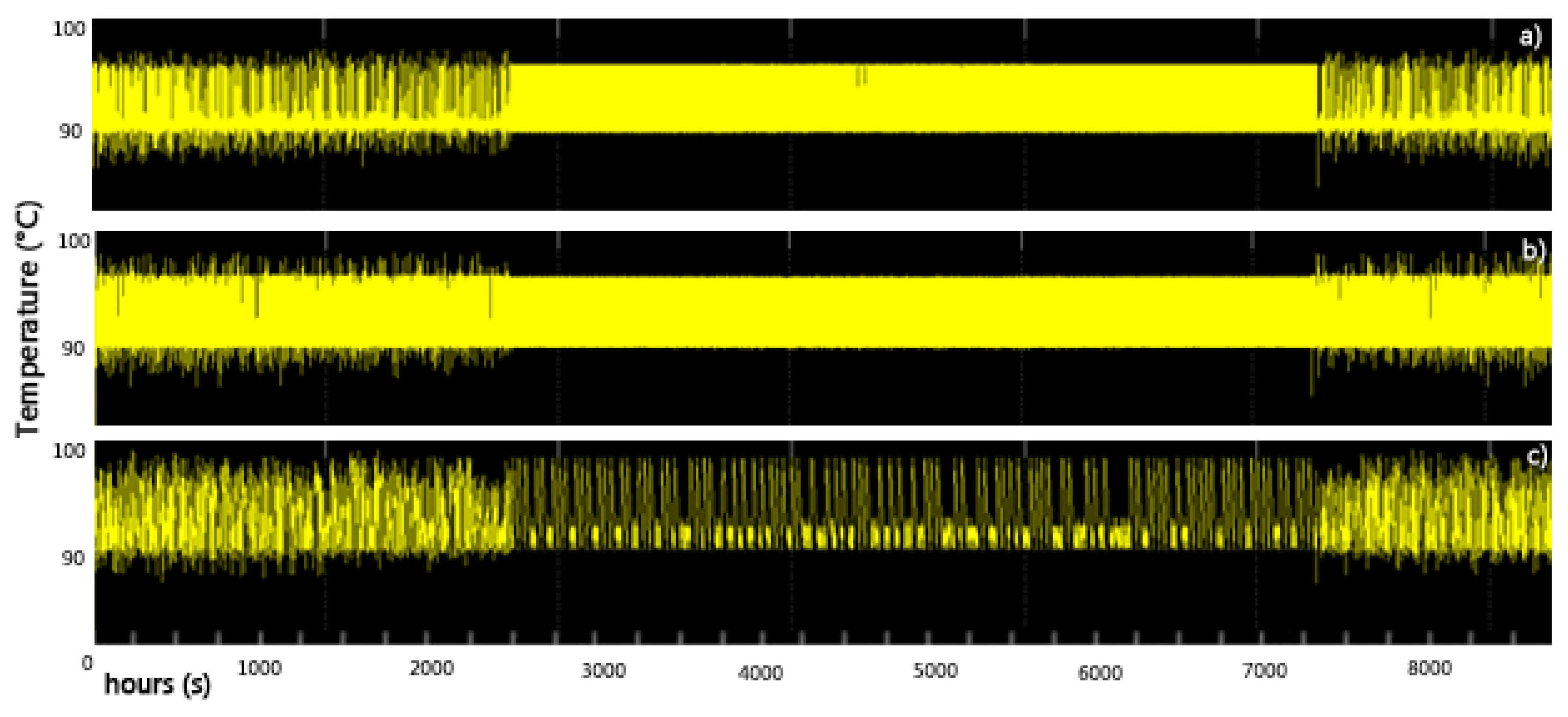


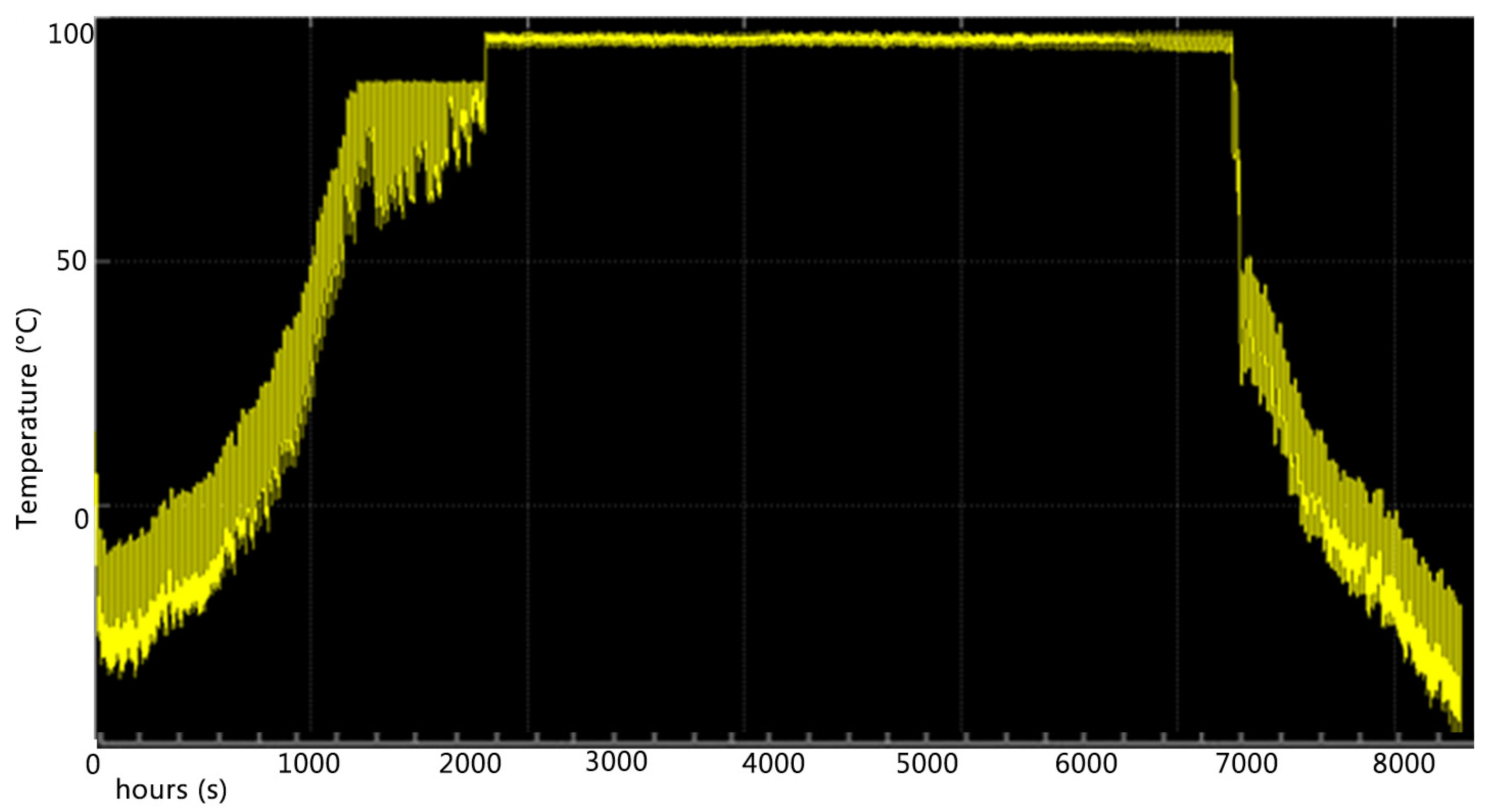

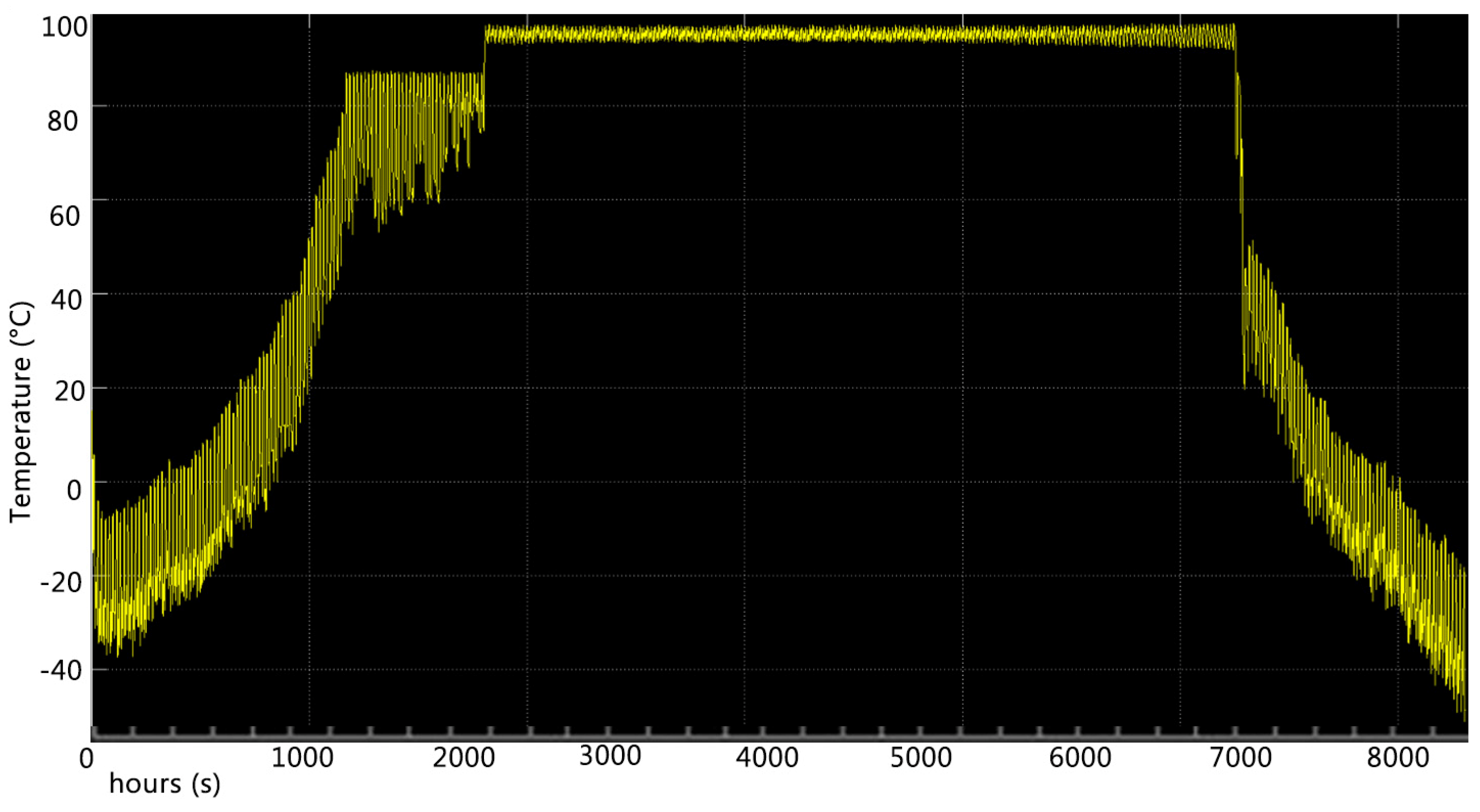

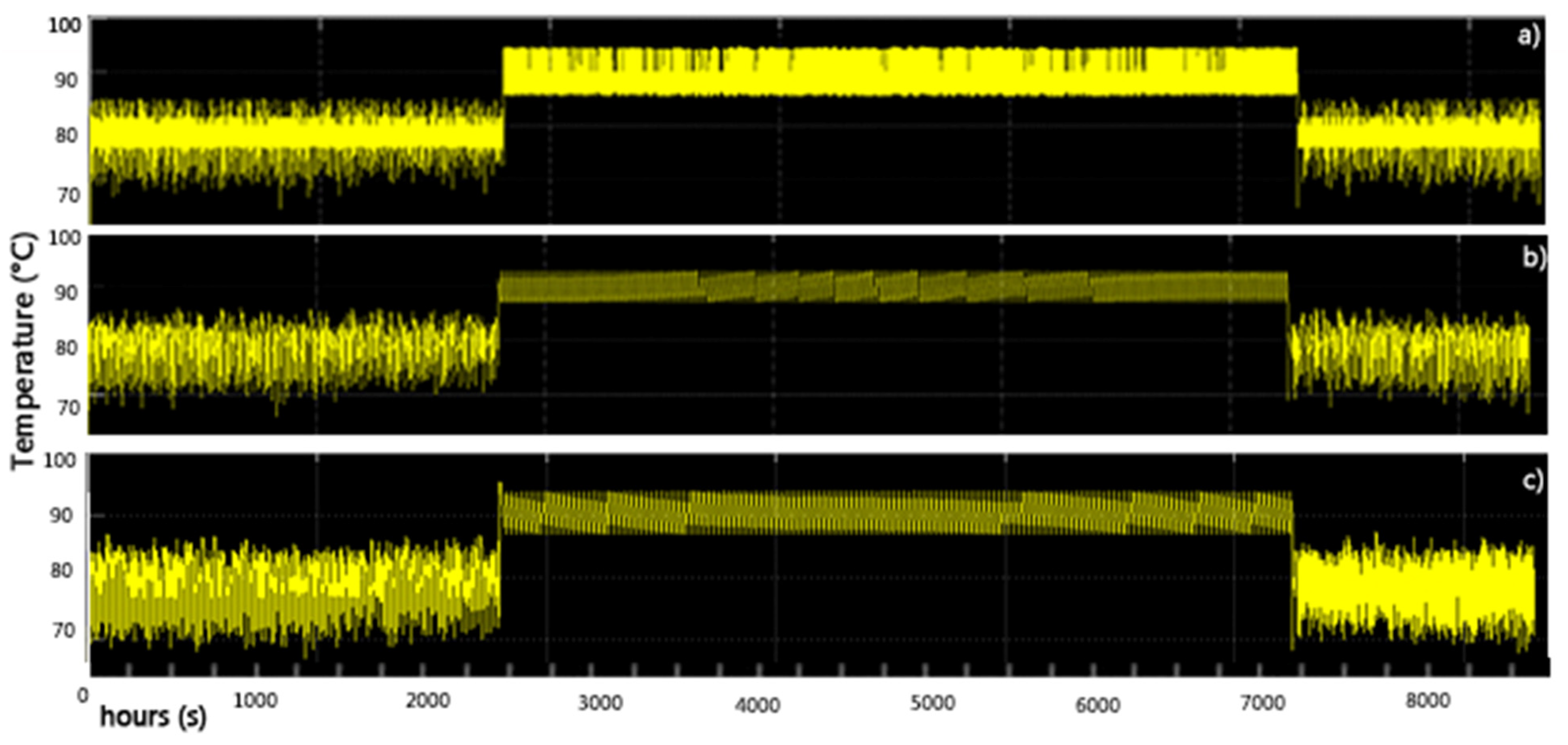

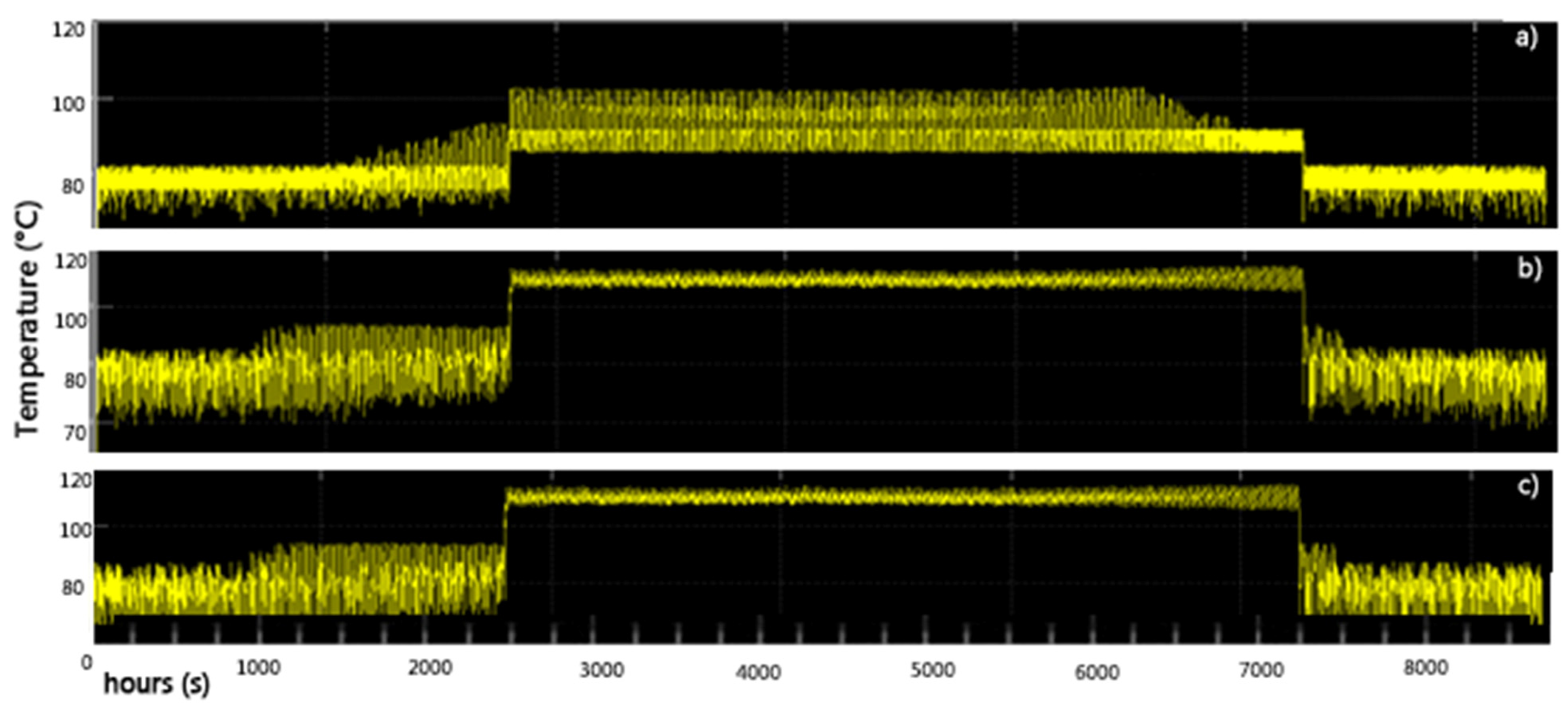
| Frame | Length (m) | Mass Flow (kg/s) | Calculated Diameter (mm) | Nominal Diameter (mm) | Tube Thickness (mm) | Insulating Thickness (mm) |
|---|---|---|---|---|---|---|
| L0 | 156 | 171 | 233.42 | 200 | 22.7 | 6.3 |
| L1 | 170 | 50 | 160.00 | 150 | 18.2 | 4.9 |
| L2 | 26 | 2 | 58.3.00 | 65 | 6.8 | 3 |
| L3 | 200 | 46 | 153.51 | 150 | 18.2 | 4.9 |
| L4 | 382 | 10 | 92.18 | 100 | 10.0 | 3.2 |
| L5 | 140 | 36 | 135.50 | 150 | 18.2 | 4.9 |
| L6 | 446 | 18 | 124.00 | 125 | 11.4 | 3.5 |
| L7 | 484 | 18 | 124.00 | 125 | 11.4 | 3.5 |
| L8 | 200 | 121 | 226.73 | 200 | 22.7 | 6.3 |
| L9 | 160 | 60 | 175.00 | 200 | 22.7 | 6.3 |
| L10 | 414 | 21 | 103.50 | 125 | 11.4 | 4.9 |
| L11 | 30 | 39 | 141.00 | 150 | 18.2 | 4.9 |
| L12 | 80 | 2 | 41.23 | 50 | 5.8 | 3.0 |
| L13 | 140 | 37 | 137.35 | 150 | 18.2 | 4.9 |
| L14 | 297 | 22 | 137.00 | 150 | 14.4 | 4.9 |
| L15 | 232 | 15 | 113.00 | 125 | 11.4 | 6.9 |
| L16 | 450 | 61 | 176.35 | 200 | 22.7 | 6.3 |
| L17 | 74 | 29 | 257.00 | 150 | 14.6 | 4.9 |
| L18 | 360 | 32 | 128.00 | 150 | 18.2 | 4.9 |
| L19 | 450 | 27 | 151.50 | 150 | 14.6 | 4.9 |
| L20 | 290 | 5 | 65.20 | 65 | 6.8 | 3.0 |
| L21 | 21 | 5 | 65.20 | 65 | 6.8 | 3.0 |
| Type of Building | Volume (m3) | Number of Floors | Total Height (m) | Number of Occupants |
|---|---|---|---|---|
| Res 1 | 14,580 | 12 | 78 | 4 |
| Res 2 | 21,960 | 12 | 175 | 4 |
| Res 3 | 19,110 | 12 | 192 | 4 |
| Res 4 | 22,632 | 12 | 198 | 4 |
| Res 5 | 22,800 | 15 | 192 | 5 |
| Res 6 | 26,160 | 15 | 200 | 5 |
| Res 7 | 30,912 | 21 | 140 | 7 |
| Res 8 | 22,356 | 12 | 200 | 4 |
| Office 1 | 3240 | 9 | 100 | 3 |
| Office 2 | 360 | 3 | 20 | 1 |
| Commercial | 7650 | 9 | 250 | 3 |
| Type | Elements | Total Transmittance W/m2K |
|---|---|---|
| External walls | Bricks and lime | 1.056 |
| Ground slabs | Semi-rigid panels, predellas slab and floor tiles | 0.438 |
| Intermediate slabs | Semi-rigid panels, reinforced concrete layers and floor tiles | 0.647 |
| Roof covering | Semi-rigid panels, reinforced concrete layers and cement mortar | 0.441 |
| Building Connected to the Network | Exergy Efficiency (%) |
|---|---|
| 1 | 0.35 |
| 2 | 0.39 |
| 3 | 0.37 |
| 4 | 0.41 |
| 5 | 0.41 |
| 6 | 0.38 |
| 7 | 0.40 |
| 8 | 0.40 |
| 9 | 0.41 |
| 10 | 0.40 |
| 11 | 0.38 |
| Building | Exergy Efficiency (%) Configuration with 1100 Panels | Exergy Efficiency (%) Configuration with 1400 Panels | Exergy Efficiency (%) Configuration with 1700 Panels |
|---|---|---|---|
| Building 1 (res) | 0.24 | 0.17 | 0.09 |
| Building 2 (office) | 0.08 | 0.1 | 0.23 |
| Building 3 (commercial) | 0.18 | 0.13 | 0.19 |
| Building | Exergy Efficiency (%) The Power of CHP Is 5600 kW | Exergy Efficiency (%) The Power of CHP Is 7000 kW | Exergy Efficiency (%) The Power of CHP Is 8400 kW |
|---|---|---|---|
| Building 1 (res) | 0.35 | 0.35 | 0.36 |
| Building 2 (office) | 0.42 | 0.41 | 0.42 |
| Building 3 (commercial) | 0.38 | 0.38 | 0.38 |
| Building | Exergy Efficiency (%) CHP of 3500 kW and 700 Panels | Exergy Efficiency (%) CHP of 2800 kW and 520 Panels | Exergy Efficiency (%) CHP of 4200 kW and 840 Panels |
|---|---|---|---|
| Building 1 (res) | 0.35 | 0.36 | 0.36 |
| Building 2 (office) | 0.41 | 0.41 | 0.41 |
| Building 3 (commercial) | 0.39 | 0.40 | 0.40 |
Disclaimer/Publisher’s Note: The statements, opinions and data contained in all publications are solely those of the individual author(s) and contributor(s) and not of MDPI and/or the editor(s). MDPI and/or the editor(s) disclaim responsibility for any injury to people or property resulting from any ideas, methods, instructions or products referred to in the content. |
© 2024 by the authors. Licensee MDPI, Basel, Switzerland. This article is an open access article distributed under the terms and conditions of the Creative Commons Attribution (CC BY) license (https://creativecommons.org/licenses/by/4.0/).
Share and Cite
Pompei, L.; Nardecchia, F.; Miliozzi, A.; Groppi, D.; Astiaso Garcia, D.; De Santoli, L. Assessment of the Optimal Energy Generation and Storage Systems to Feed a Districting Heating Network. Buildings 2024, 14, 2370. https://doi.org/10.3390/buildings14082370
Pompei L, Nardecchia F, Miliozzi A, Groppi D, Astiaso Garcia D, De Santoli L. Assessment of the Optimal Energy Generation and Storage Systems to Feed a Districting Heating Network. Buildings. 2024; 14(8):2370. https://doi.org/10.3390/buildings14082370
Chicago/Turabian StylePompei, Laura, Fabio Nardecchia, Adio Miliozzi, Daniele Groppi, Davide Astiaso Garcia, and Livio De Santoli. 2024. "Assessment of the Optimal Energy Generation and Storage Systems to Feed a Districting Heating Network" Buildings 14, no. 8: 2370. https://doi.org/10.3390/buildings14082370






